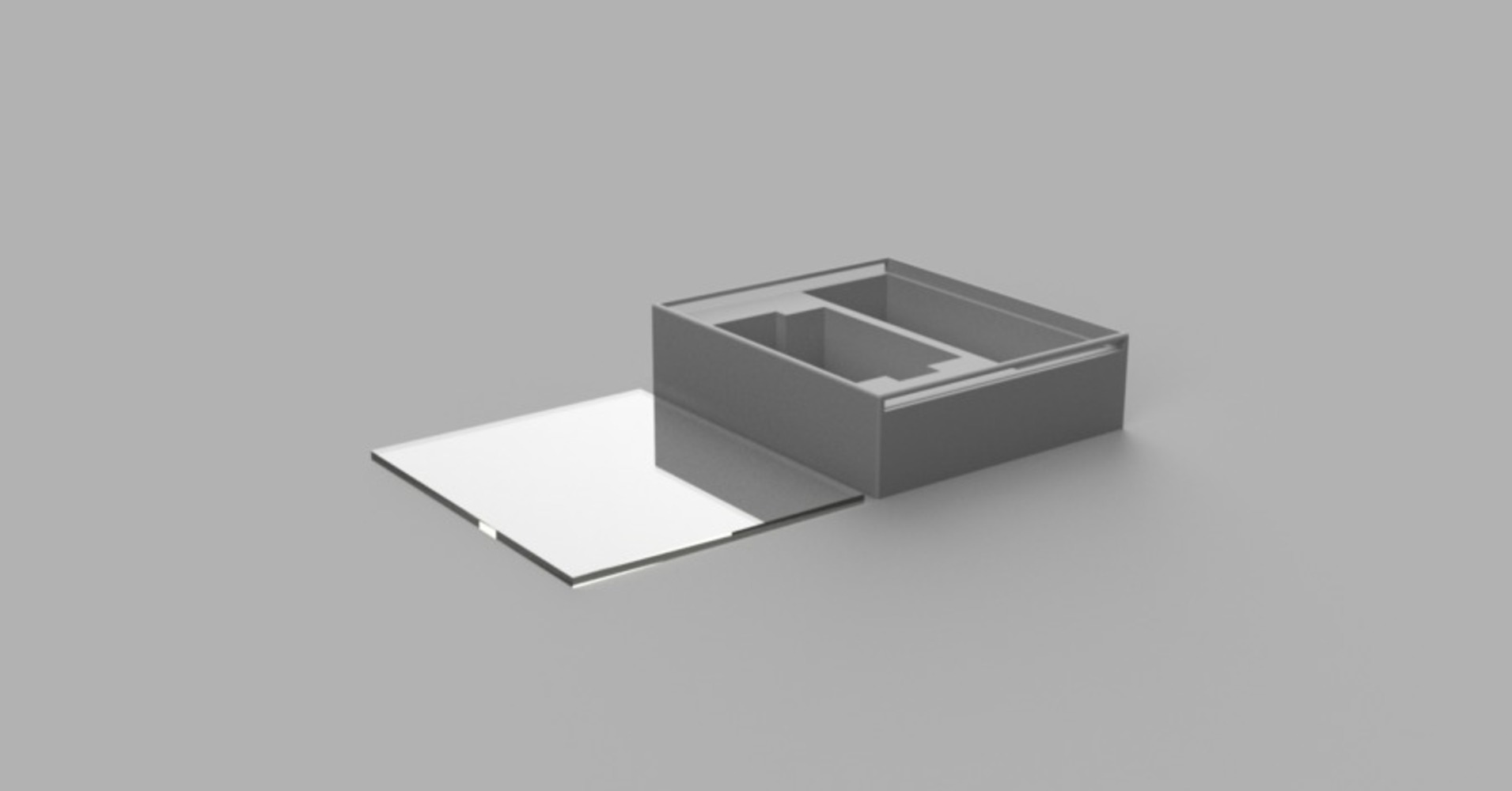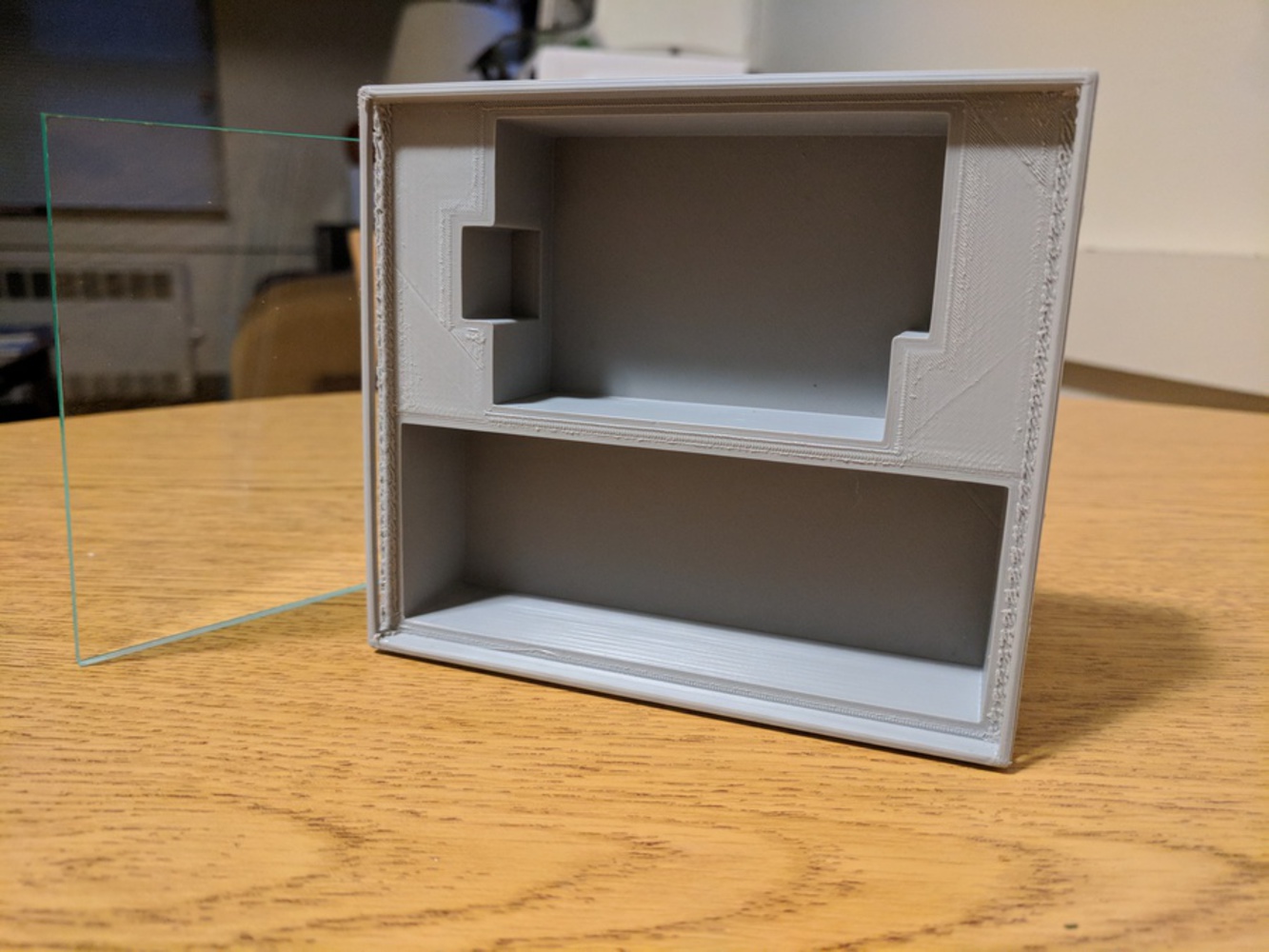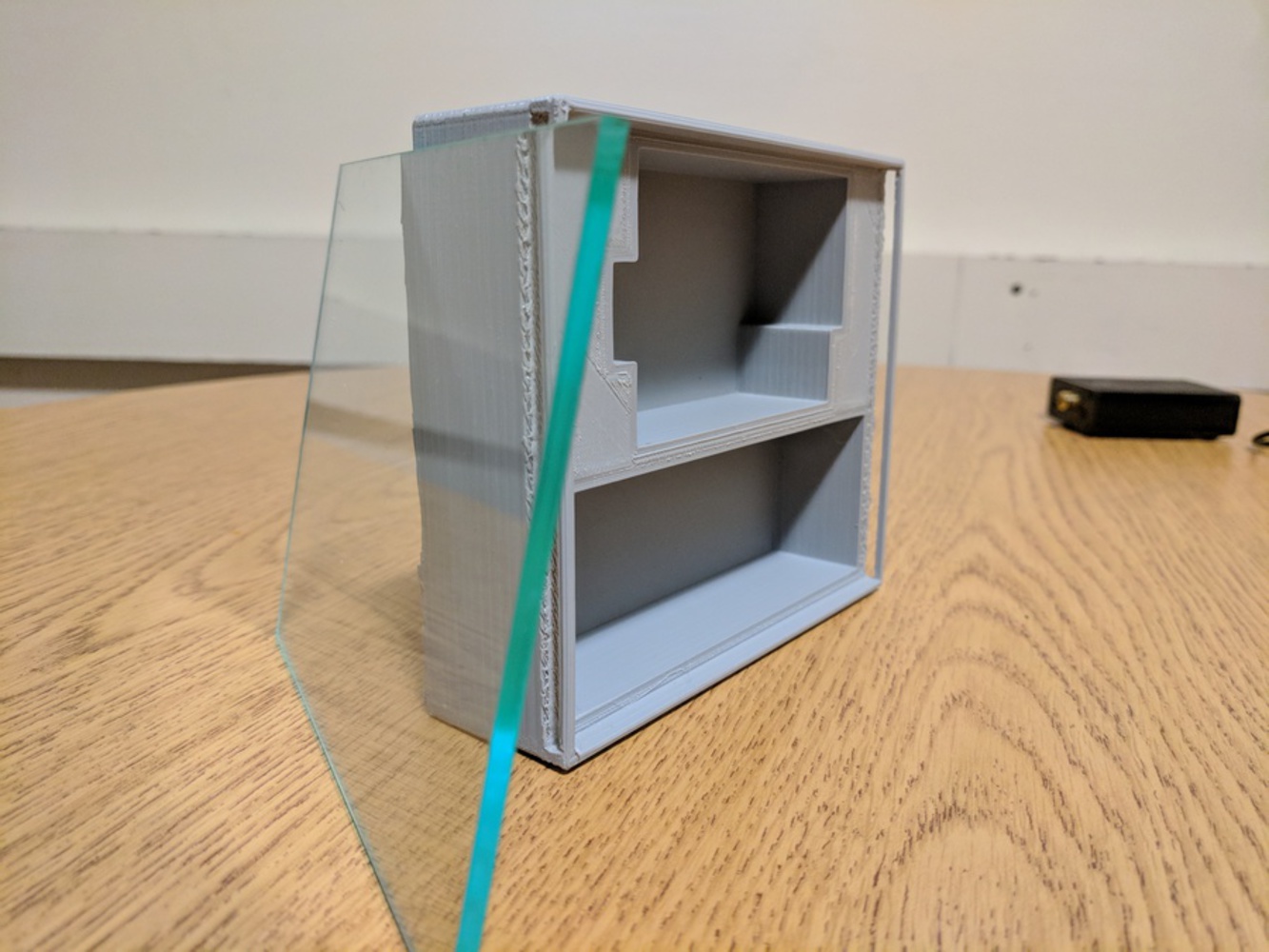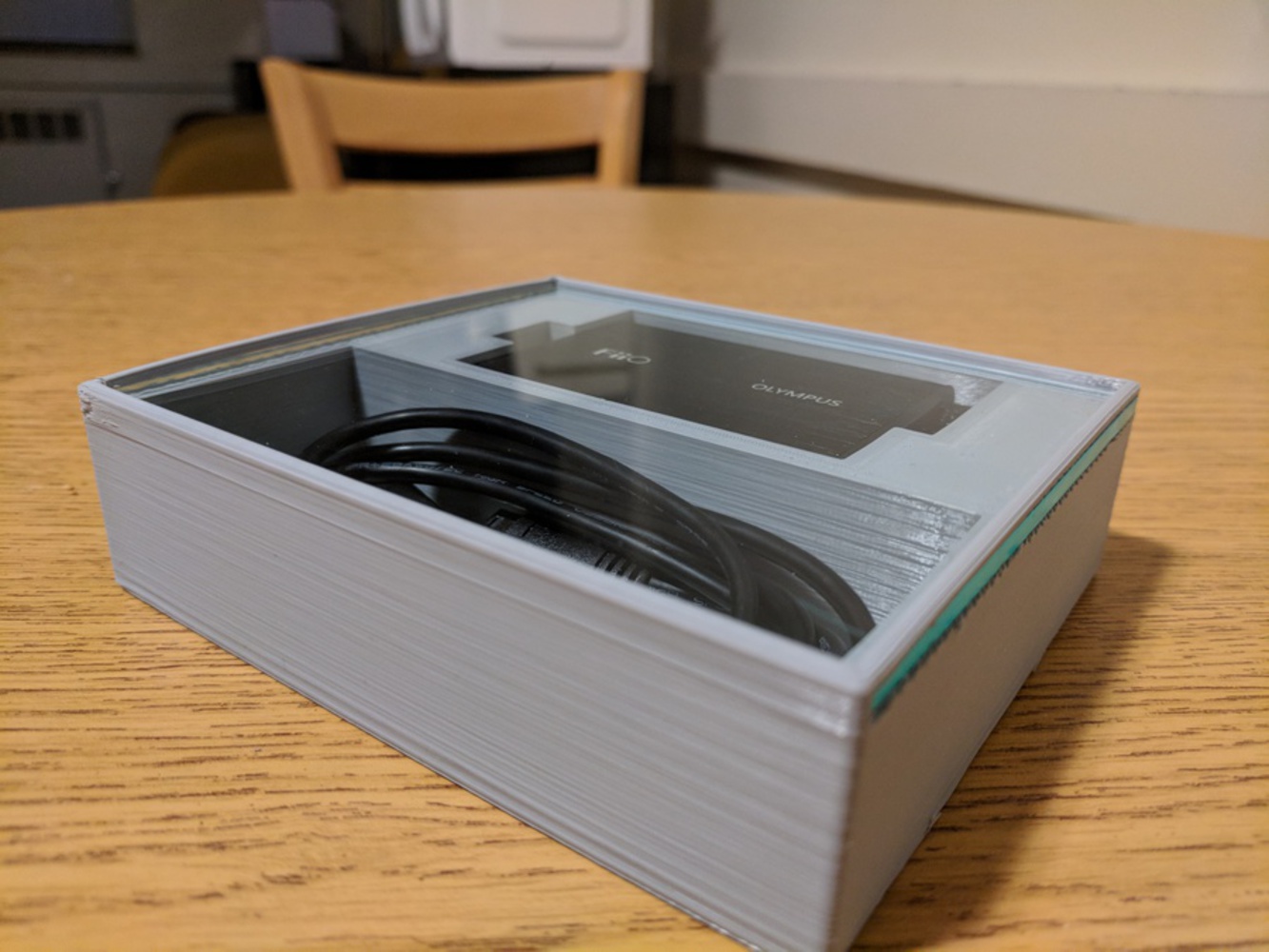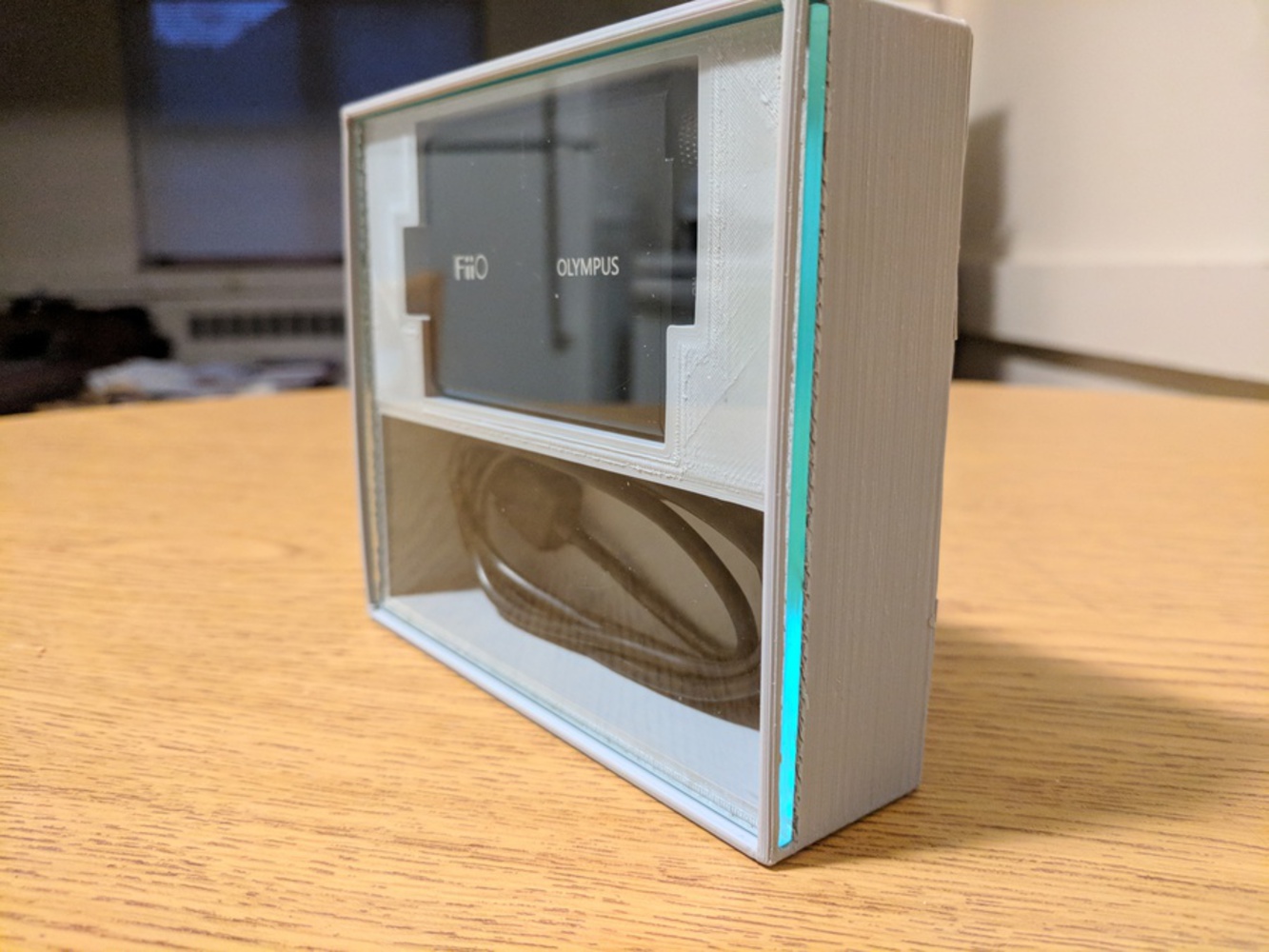Intention
When I first got my headphone amplifier for driving high-end headphones, I used the product packaging as a carrying case. This worked to an extent, but after just a few weeks, the insert in the packaging was starting to tear and just generally fall apart. After getting a new one (just an updated model), I used the product packaging from that one, but it had the same problem--neither were designed to be reused as a holder for the amp itself and the cable. Thus, I set out to create a more permanent solution.


